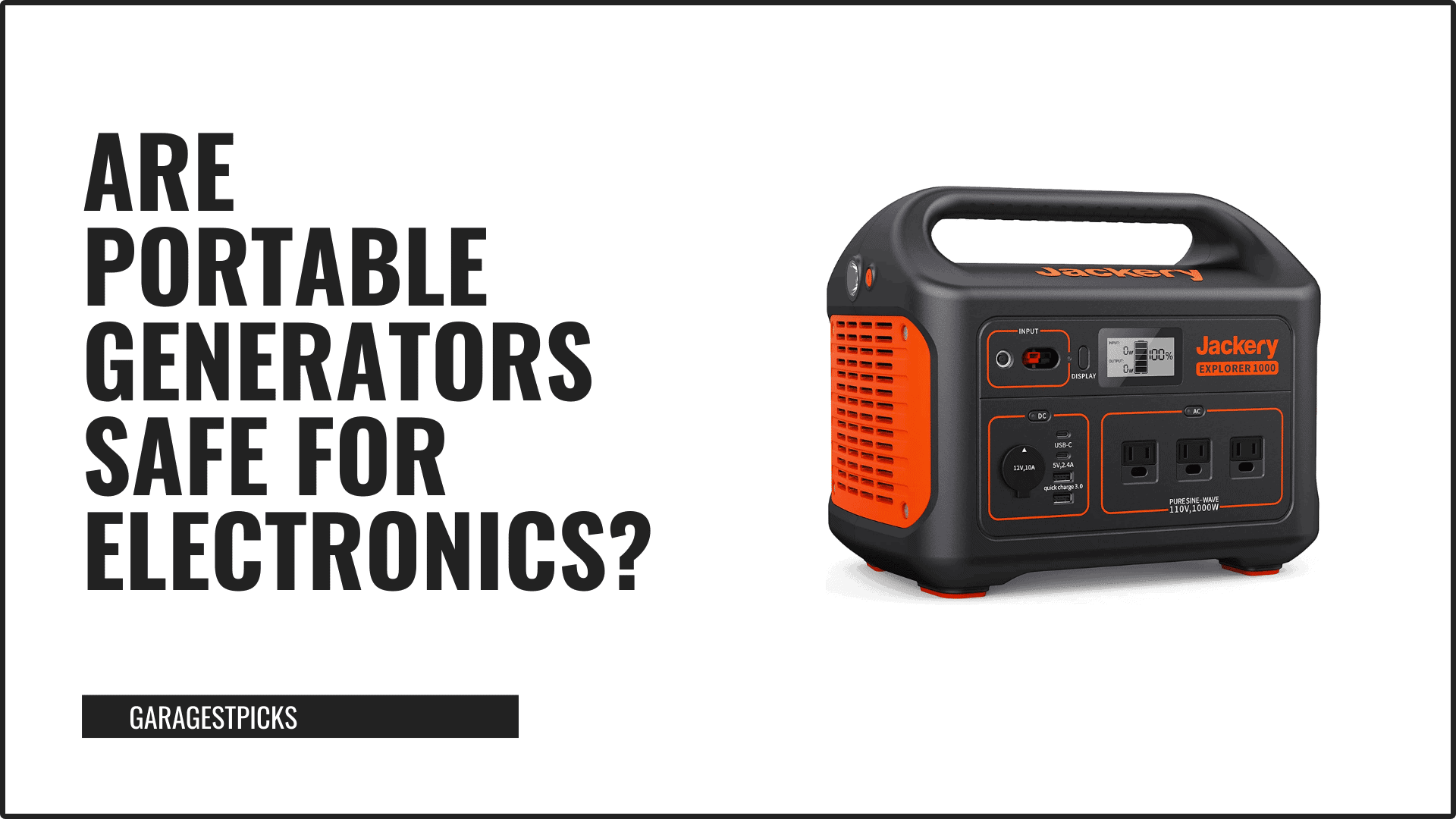I was wondering, are portable generators safe for electronics? So, I did some research, asked a few experts, and came up with the answer to this question.
Portable generators with inverter technology are safe for use with sensitive electronic devices.
Inverter technology allows generators to convert poor-quality electricity from the alternator to clean 120V AC power that our appliances require. To ensure safety, you should ground your portable generator and follow the manufacturer’s instructions when operating.
When it comes to inverter generators and UPS systems, proper grounding will help protect your electronics from power fluctuations and damage. If you use a generator not designed to provide power for electronics, buy a UPS or surge protector for your appliances and other electronic devices.
Below are a few factors you should consider when using portable generators to power electronic devices safely.
You can also check out my article on how long portable generators can run.
Always buy portable generators with inverter technology
If you have electronics plugged into a portable generator, you should choose an inverter model. Older generators do not process power before it reaches out, so it can cause spikes in the output.
Clean power is much more stable, resulting in less damage to the devices plugged in. In contrast, dirty power may cause damage to sensitive electronics due to the instability of the current.
Aside from being more expensive, inverter generators are safer for electronics. They produce cleaner electricity, which is crucial for modern technology. Modern appliances used today contain sensitive microprocessors, such as refrigerators, washing machines, and TVs.
If the electricity is not conditioned properly, the devices could become damaged. It is crucial to avoid running appliances with dirty electricity. An inverter generator will protect electronics from damage and will help prevent them from malfunctioning.
Use UPS with computers and networking equipment
Using a UPS alongside electrical generators will ensure that your equipment stays on even if the generator shuts off. This device provides power when the mains power (or portable generator) fails and ensures steady power for a period of time. A UPS also conditions power coming from an electrical generator and provides dual-layer protection to your electronics.
Using a UPS is not possible when camping due to the larger size and extra weight that you have to carry. I recommend you use a power strip with a surge protector to add another layer of protection when powering your sensitive electronics.
Ensure a proper ground connection with your generator
To ensure the safety of your portable electronics, it is critical to ground your generators properly. There are several different locations on generators that allow you to hook a ground connection. I suggest you consult the user manual for more information about grounding your portable generator.
If your generator does not have a manual or does not talk about grounding in the manual, you can consult the manufacturer’s instructions or consult a licensed electrician.
Floating neutral connections in generators do not have a bonded neutral wire. In such cases, you can use the generator’s frame as a ground wire, but you must connect any metal parts that do not carry current to the frame.
Over-voltage protection failure
Portable generators often have a high risk of over-voltage protection failures. These failures can fry your portable electronics, damage the generator, and even cause electrical fires.
The first cause of over-voltage is a faulty voltage regulator. It is a serviceable component, that should not allow excessive voltage to enter the property. Sudden loss of load at the generator can also cause over-voltage spikes. External and internal overvoltages can occur for several reasons, including lightning and a poor or lack of a ground connection.
Over-voltage failures are further broken down into power frequency overvoltage, operation mood overvoltage, and resonances overvoltage.
Such failures in portable generator models for electronics can be caused by faulty connections. When connecting a load to a generator, make sure the connection is secure, and you are using the correct wire gauge to make a connection.
Using a transfer switch when hooking a portable generator to your house
You can protect your portable devices by installing a transfer switch to your portable inverter generator when powering your house with a portable generator.
The first step in installing a transfer switch for a portable generator is to connect the electric circuits of the generator to the circuit breakers on the transfer switch.
The circuit breakers protect the wires from overloading. Most households in the US use a 15-amp breaker on the main panel, but you should always consult an electrician before installation. The larger the breaker, the more likely it is to overload the wires and start a fire. The transfer switch has dedicated switches for each circuit, making it easy to operate.
Unlike the transfer switch on a stand-by generator automatically, which connects and disconnects, the transfer switch for a portable generator must be manually flipped. A transfer switch is a safer choice for electronics than using extension cords, and can also be installed with ease by a licensed electrician. It can also help prioritize the most important circuits for use in an emergency.

